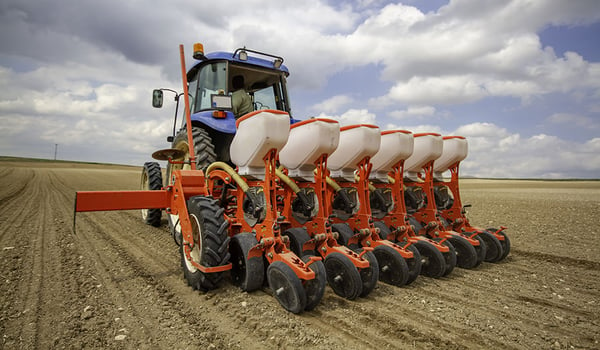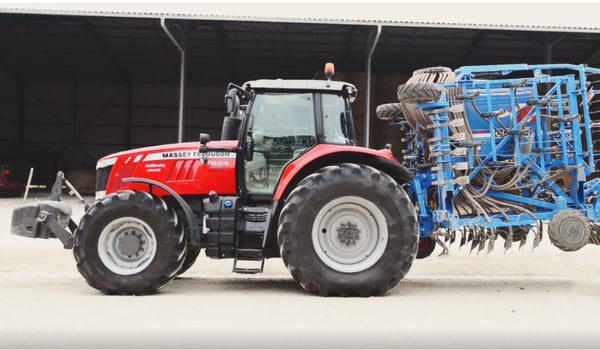BRIDGESTONE EUROPE NV/SA
AG Department
Kleine Kloosterstraat 10
1932 Zaventem
Belgium
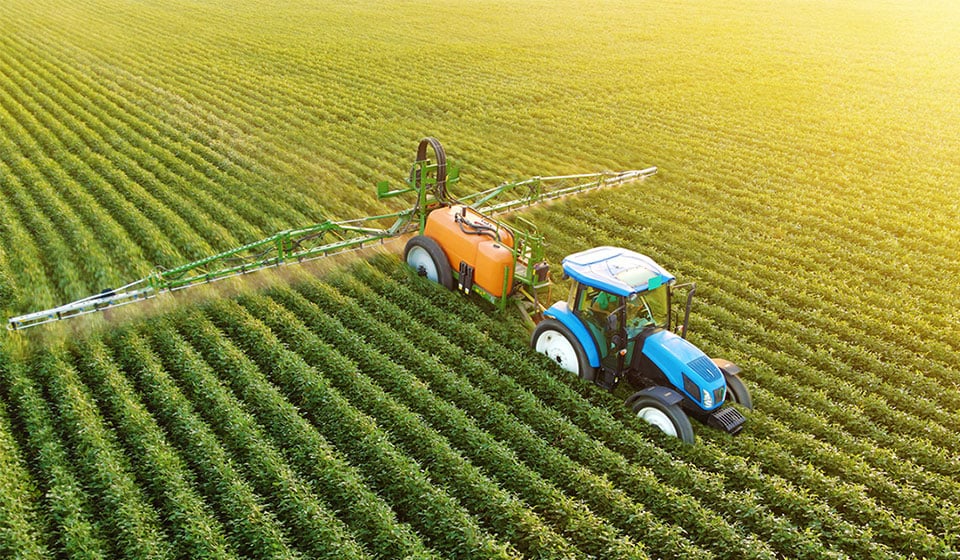
Authored by: Tractor tyre expert | 22 May 2023
What is the best choice of tyre for your tractor if you work with a sprayer in tow? Should you keep your usual wide tyre because it’s easier and quicker not to change tyres? Or must you absolutely change to narrow tyres to avoid squashing the crops? You might think that there is only a slight difference: it’s just a question of tyre width. But depending on the size of your farm, the difference in terms of yield will be significant. Given that spraying requires the most trips back and forth across your fields behind the tractor, it’s clear that the impact is not going to be neutral.
Everything is relative, and when we talk about wide wheels, the result will depend essentially on the tyre technology used.
Wide tyres, if you have low-pressure VF tyres which work regularly at a pressure of 0.8 bar when loaded, can be used during the first spraying operations at the end of the winter season, for the first liquid fertiliser inputs.
In this case, narrow tyres which require a higher inflation pressure and don’t have a large contact area with the ground will be less suitable.
A wide VF tyre effectively spreads the weight to the ground better and avoids soil compaction in wet conditions.
For all fertilizer operations carried out before sowing, the use of a wide wheel equipped with a low-pressure tyre has numerous advantages:
The impact of a very low-pressure tyre which can work at 0.8 bar will be very different from that of a standard technology tyre which requires an inflation pressure of at least 1.6 bar to compensate for the thousands of litres transported in the sprayer tank, or more if you are equipped with long boom arms which will cause a significant load transfer to the rear axle.
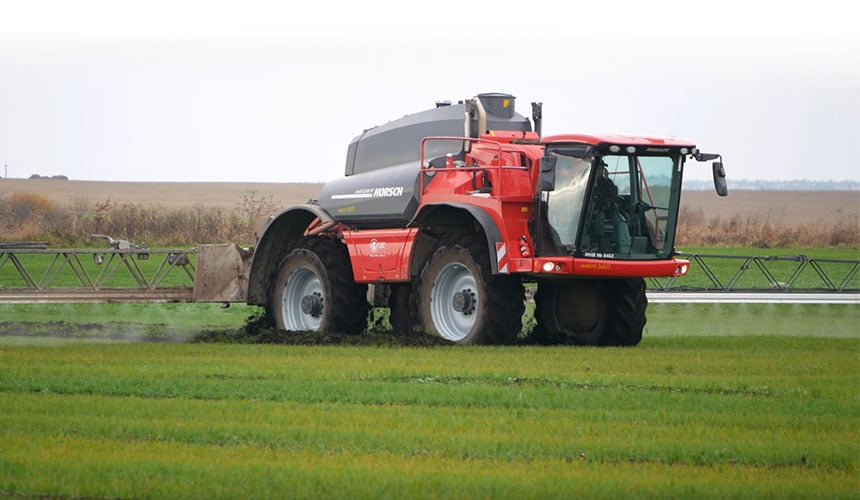
Wide standard technology tyres will effectively have to work at a high inflation pressure to compensate for the weight of the full tank at the start of operations, then bear the load transfer when the boom arms are deployed.
The damage to the soil and to seedlings will be considerable, with a loss of yield linked to the areas impacted by the tyres.
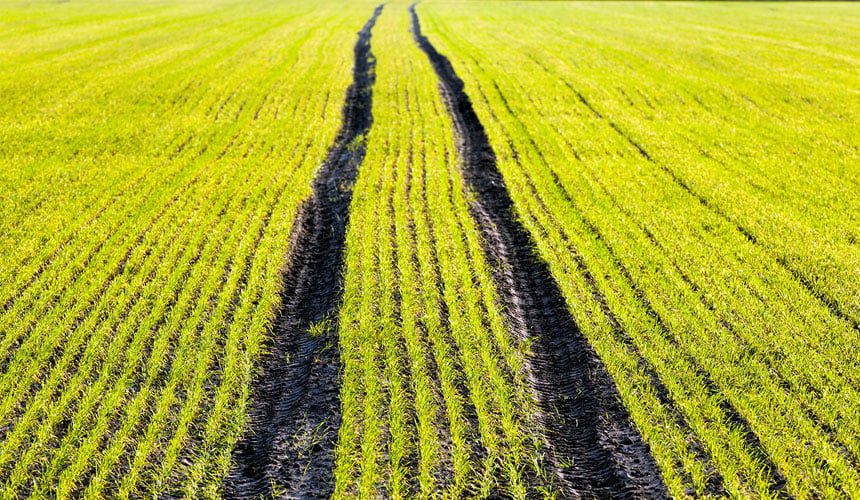
Standard tyres are not suitable for spraying during the wet season, as damage to the ground will be significant in terms of compaction of the lower layers of soil.
You will then have to use a subsoiler to restore the land at the end of the season, if you wish to avoid non-productive ruts in the middle of your fields. This leads to additional fuel costs and a loss of time which could have been avoided with tyres that are adapted to the work to be carried out.
During the spring if it is not too wet or in the summer, narrow tyres will be more suitable, because they preserve the young seedlings.
Unlike wide tyres which crush the crops, narrow tyres have less impact on the soil surface and allow young seedlings to develop correctly throughout the field.
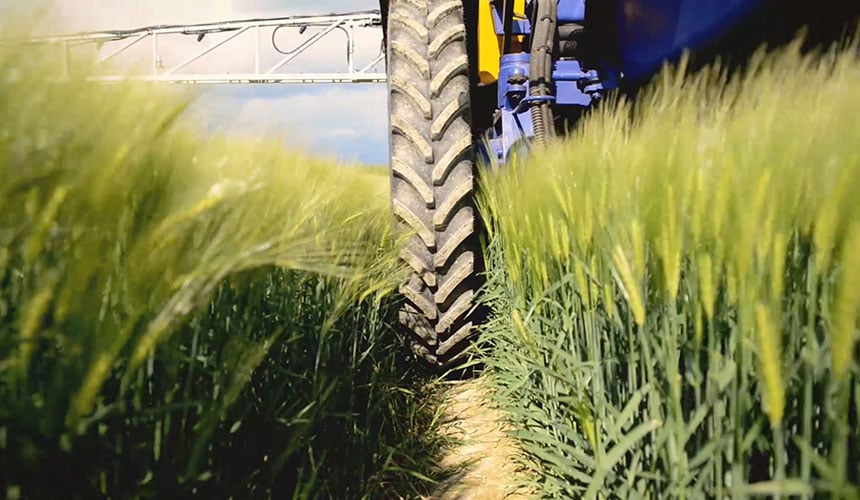
Beyond it being easier to pass between the rows with narrow tyres compared to wide tyres, the impact on soil compaction cannot be seen directly.
However, for both types of tyre the inflation pressure will be high to bear the weight of the boom arms when deployed and the full sprayer tank, so in both cases there will be compaction.
The limited width of the soil footprint with narrow tyres limits the number of plants damaged as well as the in-depth impact on your crop roots.
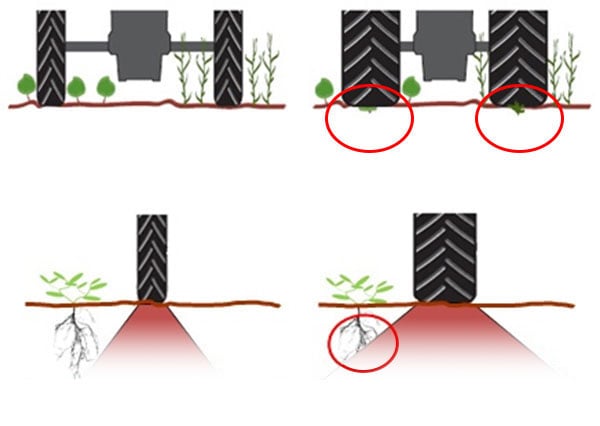
If you use a tractor-drawn sprayer you will have to fit the combination vehicle with narrow tyres so that the wheels can follow in the same tracks between the rows and have less impact on the soil surface.
To reduce the impact on the soil even further when using a towed sprayer, you should make the tractor as light as possible by removing any weights or ballast because it’s not tractive force that is needed but speed of travel to complete the spraying operation correctly.
By making the tractor lighter, you reduce rolling resistance and therefore the impact on the ground.
The larger the spray width, the less trips the tractor has to make, so the less the soil will be compacted. When opting for a tractor drawn sprayer, you can choose to work with a sprayer tank with a bigger volume which can contain up to 8,000 litres and with longer aluminium boom arms that can reach a spray width of 50 meters.
This large spray width allows you to save time in covering the entire area to be treated while reducing the number of passages across the field.
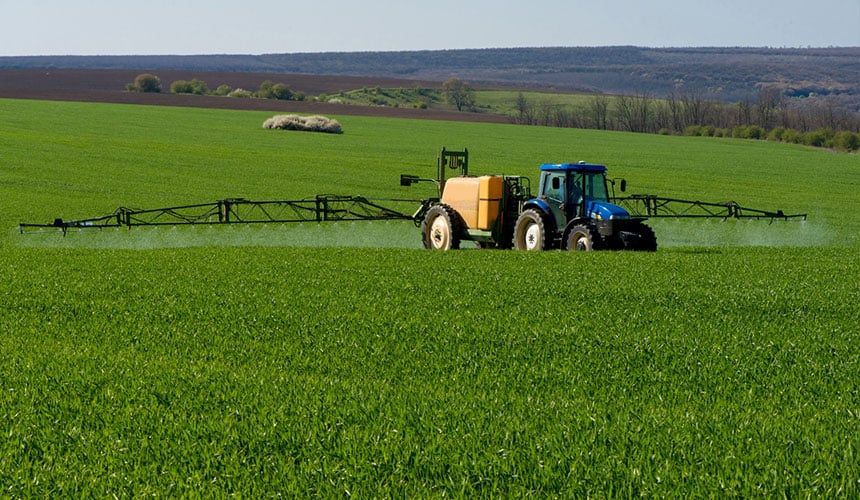
A narrow tyre requires a sophisticated technical design because it has to cope with many different types of strain, and opposing forces, in order to carry a heavy load with a small contact patch with the ground, but while maintaining a high level of sturdiness and stability.
Firestone’s Performer 95 has been designed for cyclic loads with sprayers, and contains steel chords between the casing plies and the tread which allow it to carry heavier loads.
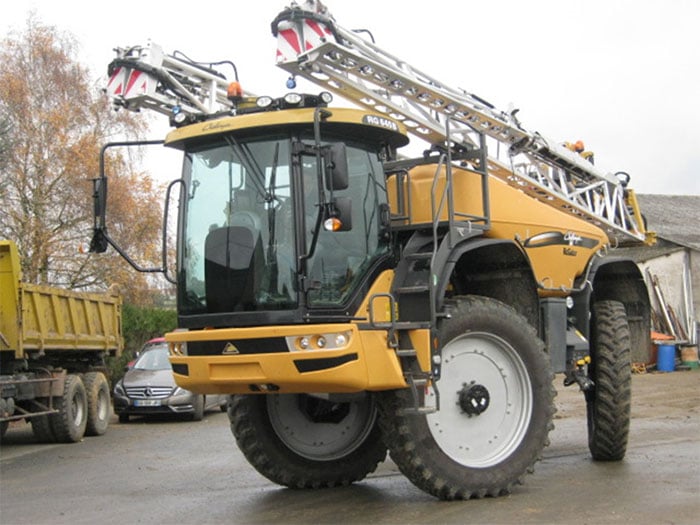
As the contact patch with the ground is reduced, the narrow tyre needs very specific lugs to ensure a good grip on the earth while avoiding slip.
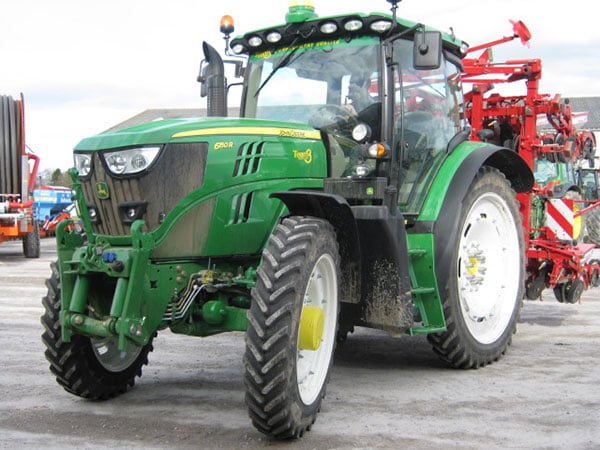
The Performer 95 tyre offers excellent road handling capacities and driving comfort:
The narrow tyre is clearly the best solution for spraying simply to be able to pass between the rows without damaging the plants. The impacted surface area in your field will be smaller and there will be almost no negative effect on your productivity.
The investment will be largely profitable compared to the work that a standard tyre can do. If you take it one step further and choose a high-tech narrow tyre which allows you to work with cyclic loads, with a very high inflation pressure, to use a high capacity tank and long boom arms, you will see a significant improvement in productivity.
Most people who read this article have also read some of the following articles:

